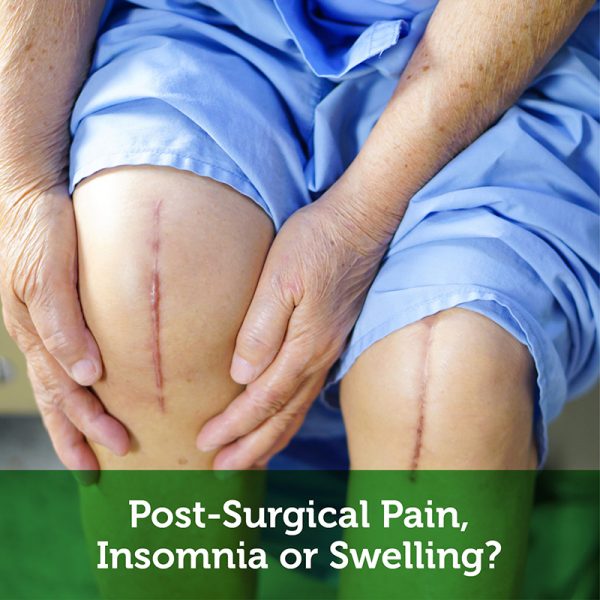Summer, with a Side of Surgery?
Surgery fixed the issue; Bridging®gets you feeling good again!
It’s that time of the year where we freak out saying ‘where did summer go, I still have so many things I want to do!’
However, summer surgery seems to be one of those things that people actually get done. This is commonly so their recovery can be in a time where they (or their helpers) are out of school, or to take advantage of good weather for post surgical recovery therapy. Knee and hip replacements seem to be the most common summer surgeries, but there are others people plan for over summer, such as tonsils and feet.
Sometimes though, a summer surgery is unplanned and our clients want to see a faster recovery period. We have already seen a few clients recovering from fractures with summer sports injuries. Being outdoors and active raises the risk factor of injury. Our clients want to be back on the field playing their sport as soon as they can.
How can Bridging help surgical recovery?
At Kinetic Konnections we look at the symmetry and flow of movement in about a dozen fundamental relationships. Most surgeries (even minimally invasive) disrupt three or more of these movement flows. By focusing on the specifics of your surgery we are able to assess and restore the affected movements fairly quickly. This allows you to heal and get back to your active life or fall sport.
How soon can I schedule Bridging to help with recovery?
There are three points in time related to surgery where Bridging can help.
- Pre-surgery (anytime prior) to help get you in a good place for moving after the pre-op tests and possible surgery itself. For example, Lisa was able to have minimally invasive surgery with some Bridging specific help to recover much faster. Read Lisa’s story here.
- Post-surgical (following discharge) to help calm the invasive trauma of the surgical procedure (e.g., anesthesia trauma, swelling, IV site irritation, restless sleep).
- Post-surgical (6-10 weeks later) to help restore fluency to movement and posture, which boosts energy levels, allowing you to feel like yourself again.
If you’ve had surgery and just don’t feel like you’re back to normal we can often have you feeling better in just one or two sessions. Schedule here.
Check out our website for more info about post-surgical support.
Why does Bridging help with surgical recovery?
Depending on the specifics, there are several ways the Bridging technique restores movement to help you feel better at each stage along the way.
Beyond the incision…
Post-surgical (following discharge)
Surgery is over but you can’t sleep or you have odd pains and stiffness that don’t seem to go away. The swelling is uncomfortable, not to mention the gastrointestinal discomfort.
The process of surgery is invasive in so many ways beyond the incision. Often the trauma to movement begins before surgery with invasive testing (biopsies, contrast MRI’s, cardiac catheterizations, etc). Read about Ann’s experience before and after surgery with Bridging help to get her back on her feet and feeling great quickly.
During the surgery itself there are IVs restricting elbows or wrists; anesthesia and breathing support restricting the head; and odd positions of your body during the process. Minimally invasive surgery uses gas to expand the area the instruments pass through which disassociates the integrity of movement in the area.
These all disrupt essential relationships of the body related to movement, core integrity, and head relationships. You may not even realize the movement is off—all you can tell is that you don’t feel right.
Bridging can help with most of it, and one to two sessions makes a huge difference in the comfort of your recovery.
Another common characteristic we find at this stage is uncomfortable swelling. By using just a little of the Bridging technique’s movements to support the circulatory pathways, most swelling diminishes quickly allowing for a faster overall recovery.
A month or two later I should be back to normal, right?
Post-surgical (6-10 weeks later)
You don’t feel right and may have symptoms that have nothing to do with the procedure so you aren’t sure what is wrong. We also find many people still have some residual discomfort, pain, or lack of energy even once everything should be mostly healed. The Physical Therapy exercises you diligently did to regain strength haven’t helped much with balance or stability.
Often people we see post-op have trouble with their sleep or energy levels; we find this relates to movement of the core being compromised by the surgery itself or the breathing support. Symmetry and flow of the core is stuck. Even though the body is healed, the movements in the core need some support and guidance to re-center and link correctly. This is the real magic of Bridging—it’s quick and specific and gets your core movements on functioning effectively again.
The scar tissue is at fault they say … Yes, the scar tissue can be a source of discomfort. Different than other professionals, we restore the movement to and across the area affected by the surgery. When the affected area can move freely, we find the scar tissue begins to soften on its own. The scar had an important job; now that job is done and the movement needs help returning to normal.
Does this sound like something you or a loved one are experiencing? We can help.
How do I get started?
You can call 847-390-8348 or schedule online for a session to find out how we can specifically help you, or your loved one.

